No products in the cart.
I breed 16 species seriously, meaning that I am actually able to make progress and either already have or anticipate eventually releasing new varieties. I work with another 21 species either prospectively, meaning that I would like to breed them but haven’t managed to get them to reproduce sexually, or on too small a scale to consider the work serious.
One of the most common questions that I am asked is “which of the crops that you work with are your favorites?” This is a harder question to answer than it might seem. My favorites change over time and are significantly influenced by how much success I have with them. My answer might be different next year. It would almost certainly be different in five or ten years. There are some crops that I enjoy breeding but that will probably never rise to the level of favorites. There are others that might well become favorites if only I could make some progress.
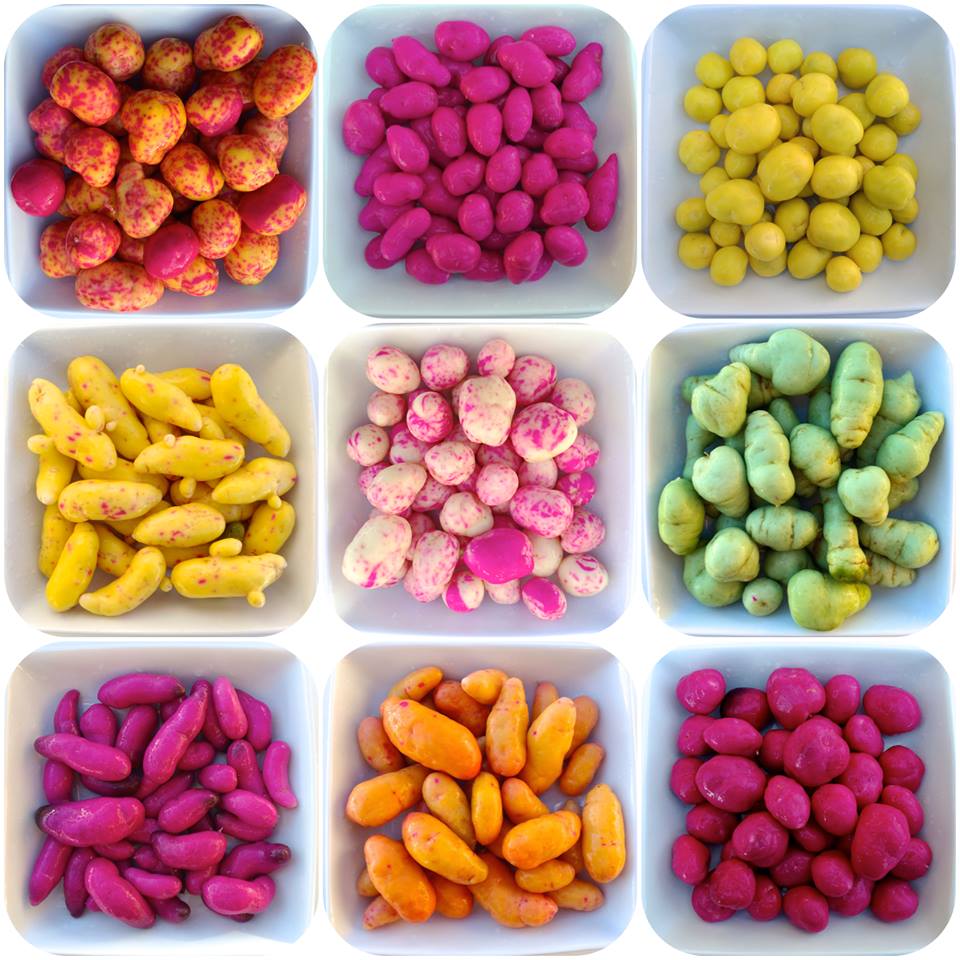
In other ways, my answer is probably very predictable. How much I like working with a crop has a lot to do with how easily it grows here, how much progress I can make breeding it, and how much I like eating it. A quick scan of the blog or even the front page of Cultivariable should give you a pretty good idea where I am spending my time and reveals a lot about which species I favor. Nevertheless, there might be a few surprises.
Right now, these are my top five:
There are a lot of reasons to like ulluco. It looks amazing. It tastes good. It has a unique but appealing texture. The tubers are a good source of nutrition, including some potentially valuable micronutrients like betalains. It also grows very well in this climate. It is a versatile crop that can be cooked in many ways and is also underappreciated as a leaf crop. On top of all that, I have the fantastic luck to be able to breed it, something that nobody else on the planet has had much success with. That makes it feel particularly rewarding to work on. If I were an academic breeder with someone paying me a salary, I would probably focus entirely on ulluco. I can’t imagine anything better than developing new varieties that would make it possible for more people to enjoy this crop. Ulluco has been in the top spot for a while and seems likely to remain there for a long time.
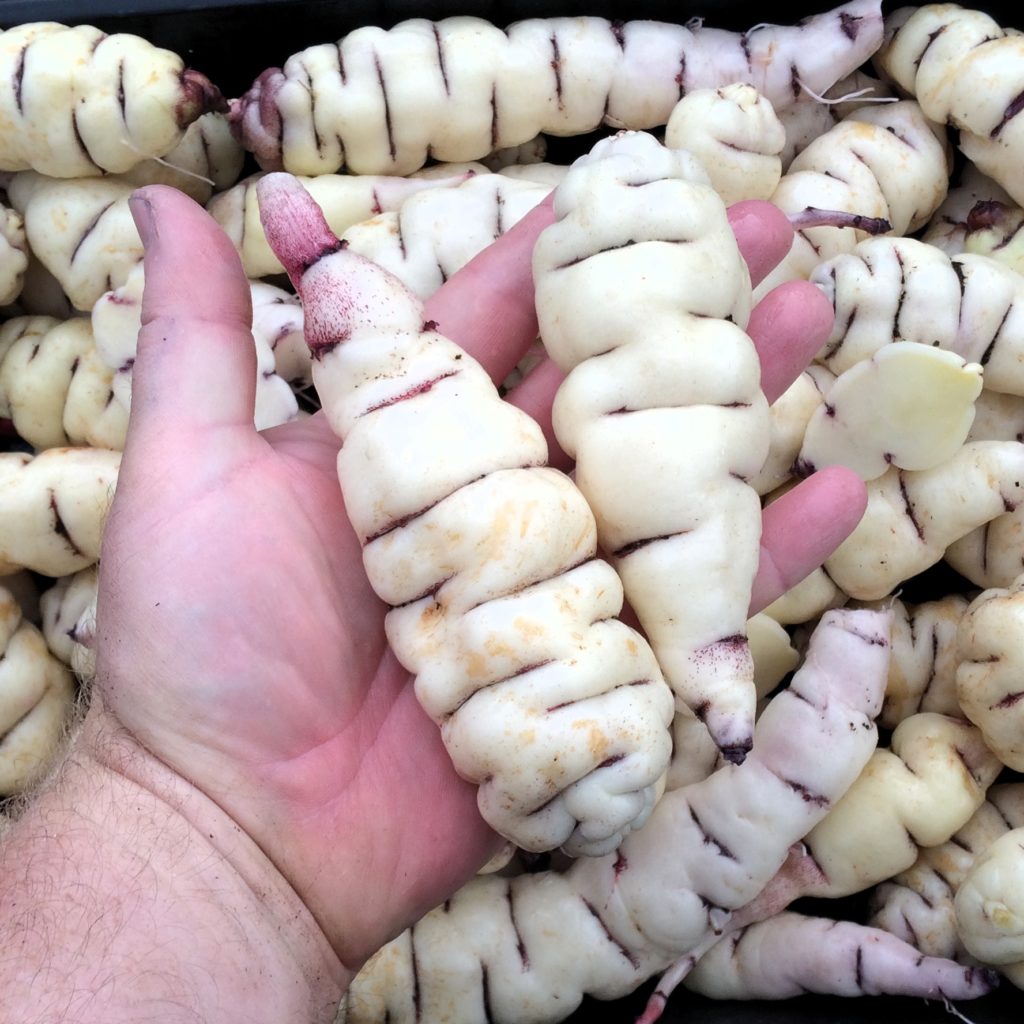
2. Mashua (Tropaeolum tuberosum)
I always seem to surprise people when I admit how much I like mashua. Mashua has a heck of a lot going for it. It looks very attractive. It can have incredible tuber yields. It is a good source of nutrition, particularly for a tuber crop. It grows very easily here. It is reasonably versatile, with tubers, leaves, and flowers all edible. Even if the tubers don’t win you over, it is an excellent leaf crop that should appeal to anyone who likes mustard greens. The only problem is that the tubers don’t taste that great. I’ve actually come around on this subject quite a bit though. It took a lot of exposure and experimentation in the kitchen to get to like mashua’s flavor, but I can honestly say now that I enjoy eating it. There are still varieties that I think don’t taste very good, but there are others that I am very happy to eat. Mashua has a truly odd flavor, but you can get used to it and eventually come to like it. Part of the attraction for me is that there is so much that is good about this plant that it could really become a very valuable crop with the development of milder varieties. For an Andean crop, it is relatively easy to breed, yet very few people are working on it. I guess I feel like it needs me.
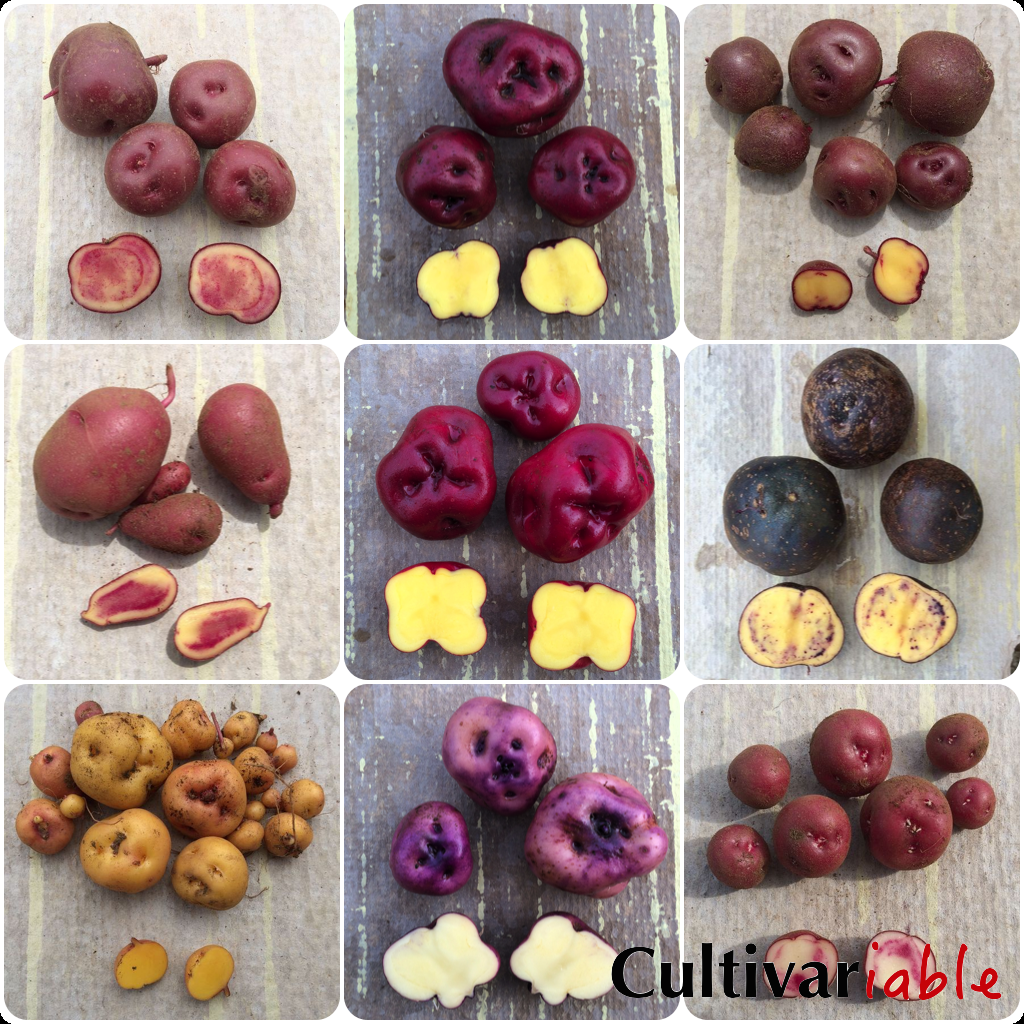
Potato is the crop that taught me plant breeding, so it will always find a place among my favorites. In fact, my potato education is ongoing and will probably never end. One of the really wonderful things about potatoes is the incredible amount of research done on the crop. The potato serves as a model for all the other species that I work with. While the details aren’t always the same, the body of research on potatoes is an endless source of inspiration and ideas. Beyond that, I like pretty much everything about growing and eating potatoes. They are also a special crop for the breeder, because you have the opportunity to expore so many shapes, colors, and flavors that you will never find at the grocery store. I will never be a great potato breeder because I don’t have it in me to specialize too narrowly, but working with potatoes has made me much more skilled and knowledgeable. I will never get bored of working with potatoes.
4. Yacon (Smallanthus sonchifolius)
As I have mentioned, how much I like a crop has a lot to do with how much success I have with it. I initially found yacon pretty boring because there was so little that I could do with it. It has great features: it grows here very easily, yields amazingly well, and tastes great.
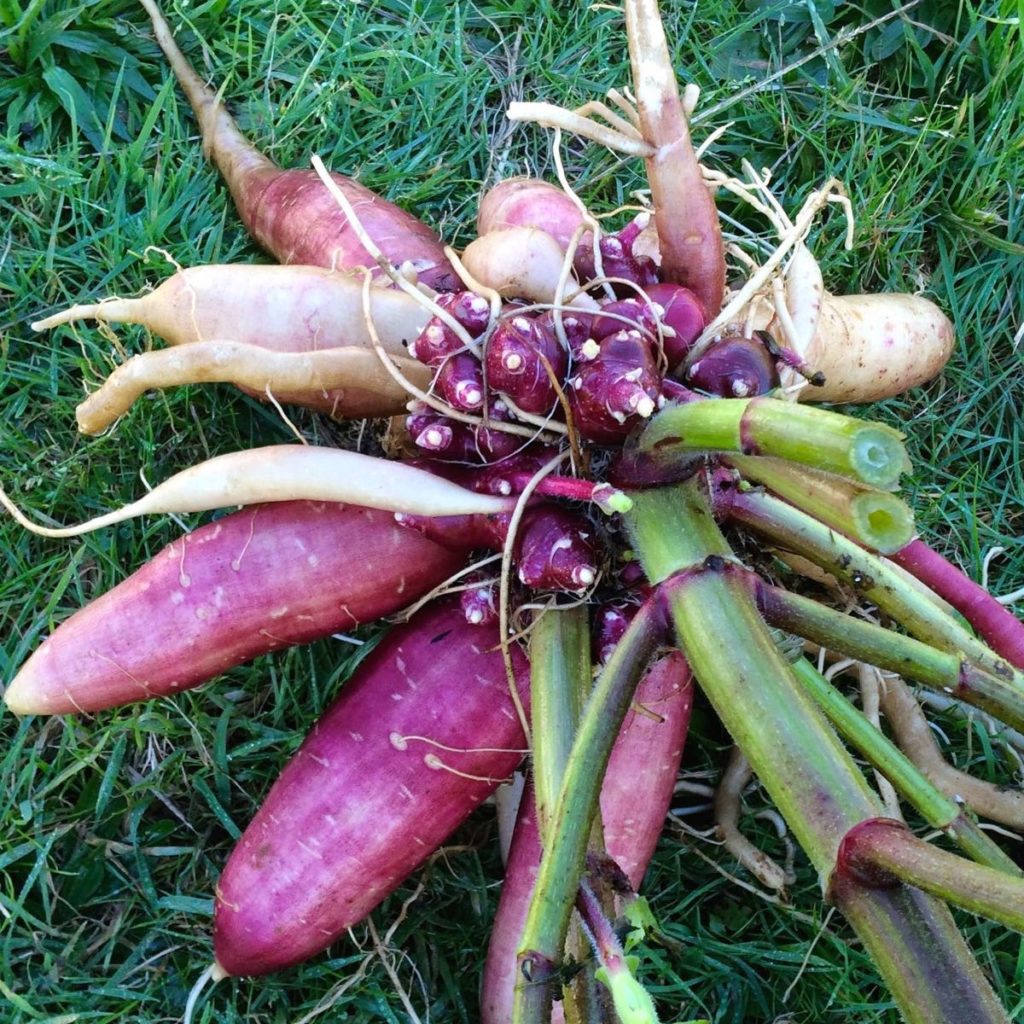
There are also some features that I find less attractive. I don’t find it the most versatile crop; I pretty much eat it raw and that’s it. That’s not so unusual though – there are many crops, particularly fruits, that I really only eat raw. Growing a lot of yacon is also a lot of work for what is mostly a one man operation. I can grow a thousand seedlings of the previous crops and harvest and evaluate them pretty easily. Doing that for a large number of yacon seedlings is a monumental task. The plants are big, digging them is hard work, as is transporting and storing them. All of that has to be done before we even begin tasting them. So, I can’t look at a table of yacon seedlings without anticipating a lot of back breaking work. For a long time, the big problem was that it was impossible to breed. It seems I have now cracked that problem and yacon breeding is going full speed ahead. That has increased my interest dramatically, but my back hurts.
Many people are surprised that this one closes out my top five, but do keep in mind that it is at the bottom of a list of only five crops that I would choose to grow over anything else. I like oca a lot. It has many of the same things going for it as ulluco does. It might be even more fantastic looking than ulluco. It has a really nice texture. I grows very well here and I find it easy to work with. It is nearly as versatile as the potato. The only negative is that I usually don’t enjoy eating it as much as I do potatoes or ulluco. That’s not to say that I don’t like it. I eat a lot of oca. There are a variety of flavors in different oca varieties and I like some of them a lot. I don’t get very excited about taste testing lots of new varieties because I am not a huge fan of the very common acidic/vinegary flavor. The other thing that I like less about oca is that it is almost impossible to make predictions about crosses. This is a challenge with all of the crops in my top five (although ulluco and mashua will probably become much more predictable in time), but the genetic diversity in oca is so high that it pretty effectively thwarts any attempt to harness it. That makes oca breeding a bit like playing the lottery; you can’t really game the system, you just have to buy lots of tickets and hope for the best. I don’t find that quite as satisfying as I do trying to work out the underlying genetics in varieties to plan crosses.
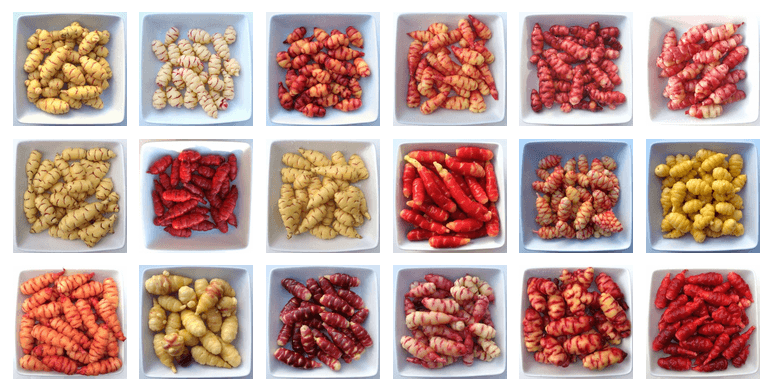
Future Favorites
As I said at the beginning, this list is likely to change. I can anticipate some crops that might work their way into the top five in the future if only I could achieve some more success with them.
Arracacha (Aracacia xanthorrhiza) is a delicious crop and I would love to breed it. It has serious limitations like a growing season that exceeds a year, no frost tolerance, and extreme reluctance to flower. We also have almost no genetic diversity to work with in the USA. Still other crops now in the top five have looked nearly as hopeless. I would love to make some progress with arracacha.
Mauka (Mirabilis expansa) is another Andean root crop that grows well here and tastes great. There is very little genetic diversity available outside the Andes and maybe not very much available even in its homeland. That is a serious limitation to breeding. So far, my crosses haven’t produced anything much different than the parents, but this crop could easily become a favorite if I could make some improvements in time to maturity, tenderness and shape of the roots, and perhaps better edibility of the leaves.
Root chervil (Chaerophyllum bulbosum) is another delicious crop that has extremely low genetic diversity. I don’t know how realistic it is to expect to improve this crop. Unless we miraculously discover a group of new and phenotypically diverse varieties, progress is going to be very slow. This crop needs size and uniformity, traits that are not in good supply in any variety that I have grown.
Tartar Bread Plant (Crambe tataria) is fast becoming a favorite of mine due to its versatility. Unlike so many minor crops, it doesn’t appear to be limited by a lack of genetic diversity. The leaves taste like spicy mustard greens. The florets are like a spicy broccoli and the roots may have potential as a daikon-like crop. All of that in a perennial, hardy plant that doesn’t need to be replanted every year. It is going to take some time to develop these traits, but I wouldn’t be surprised to see this plant creep into the top five at some point.
